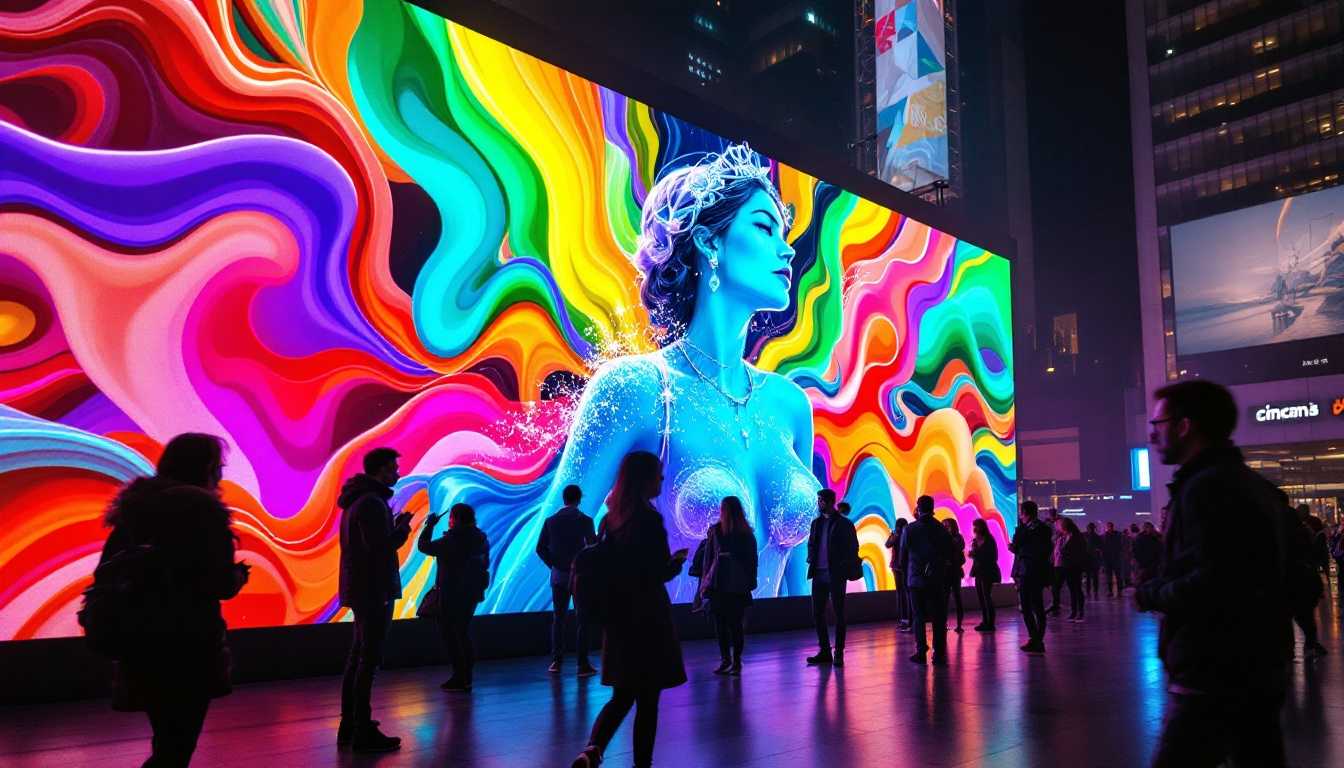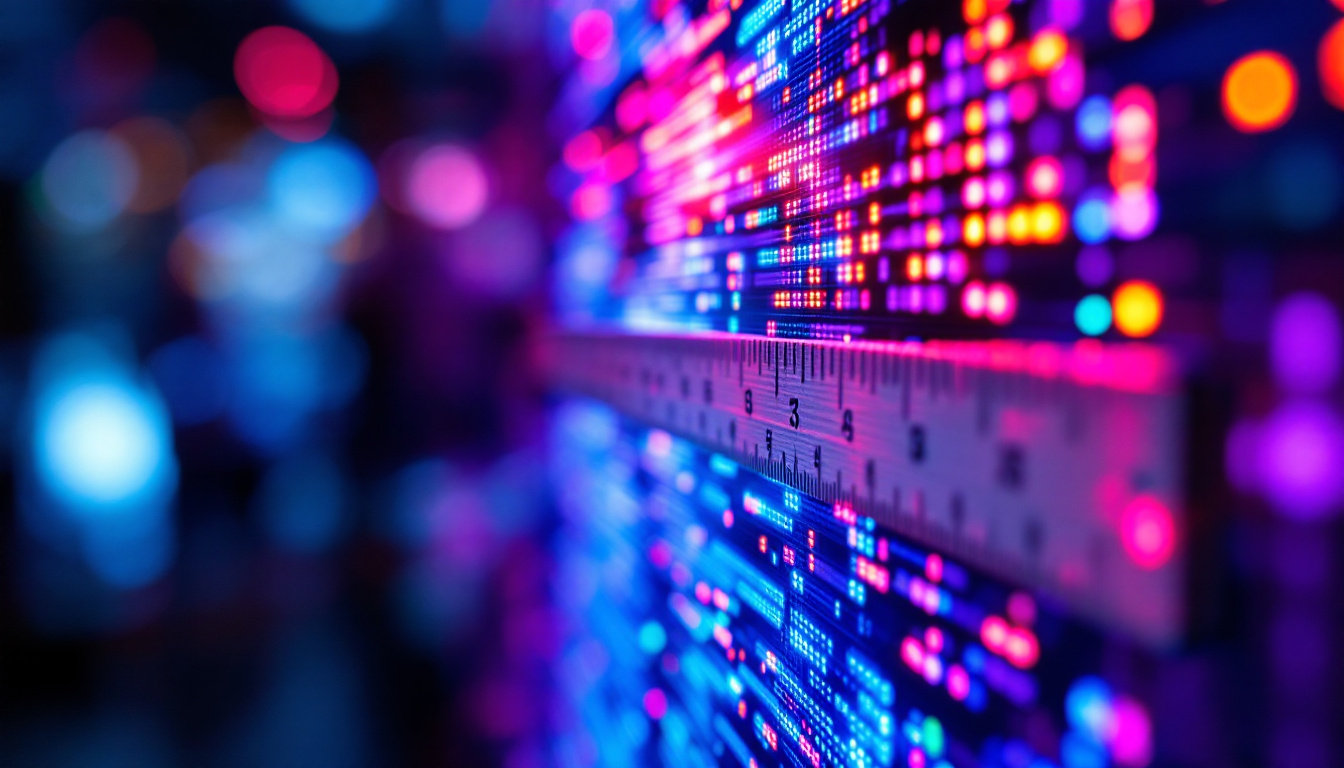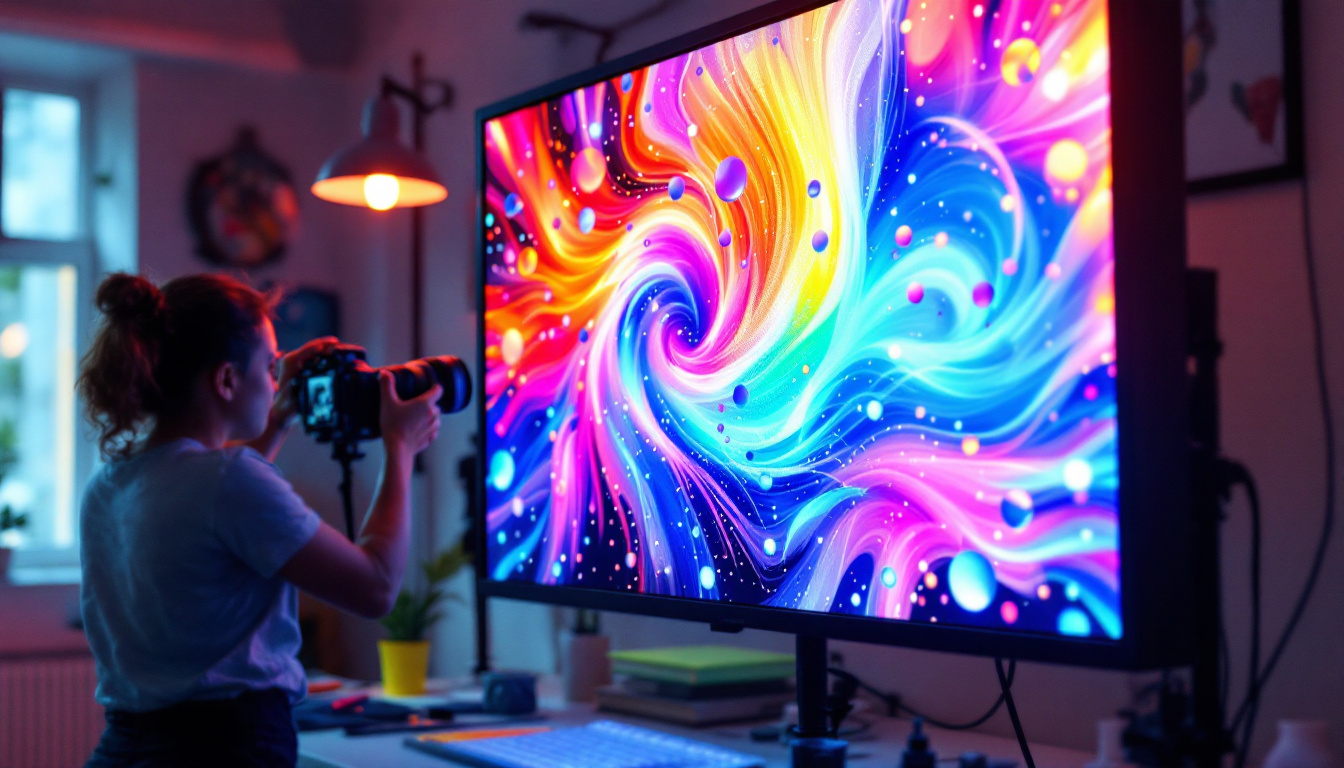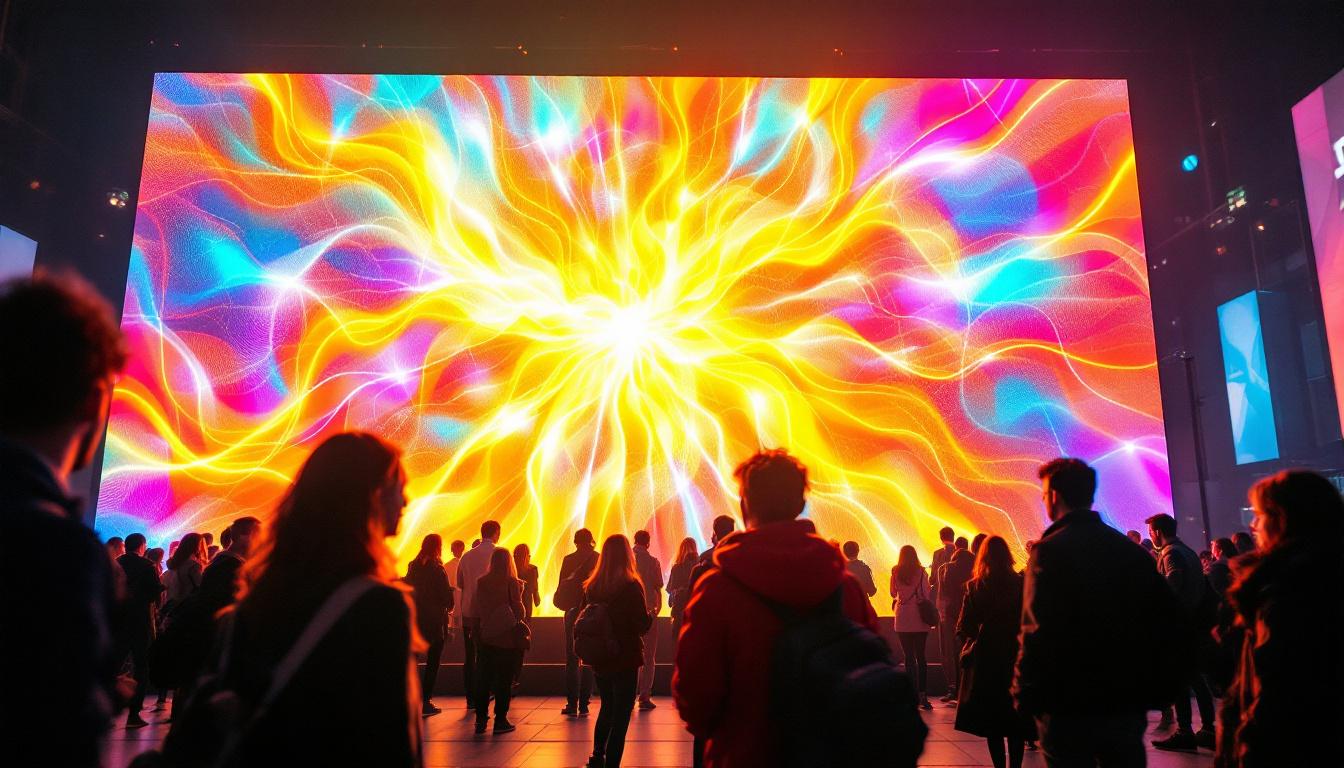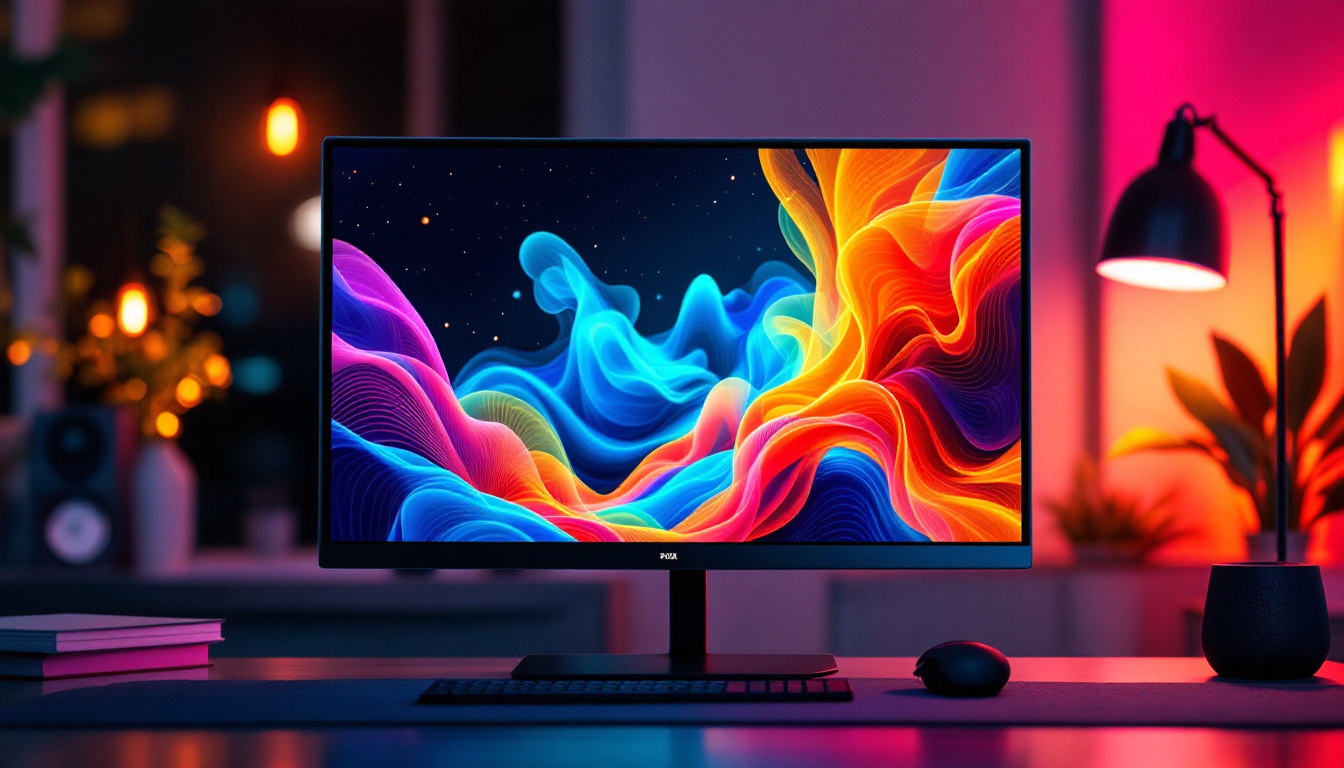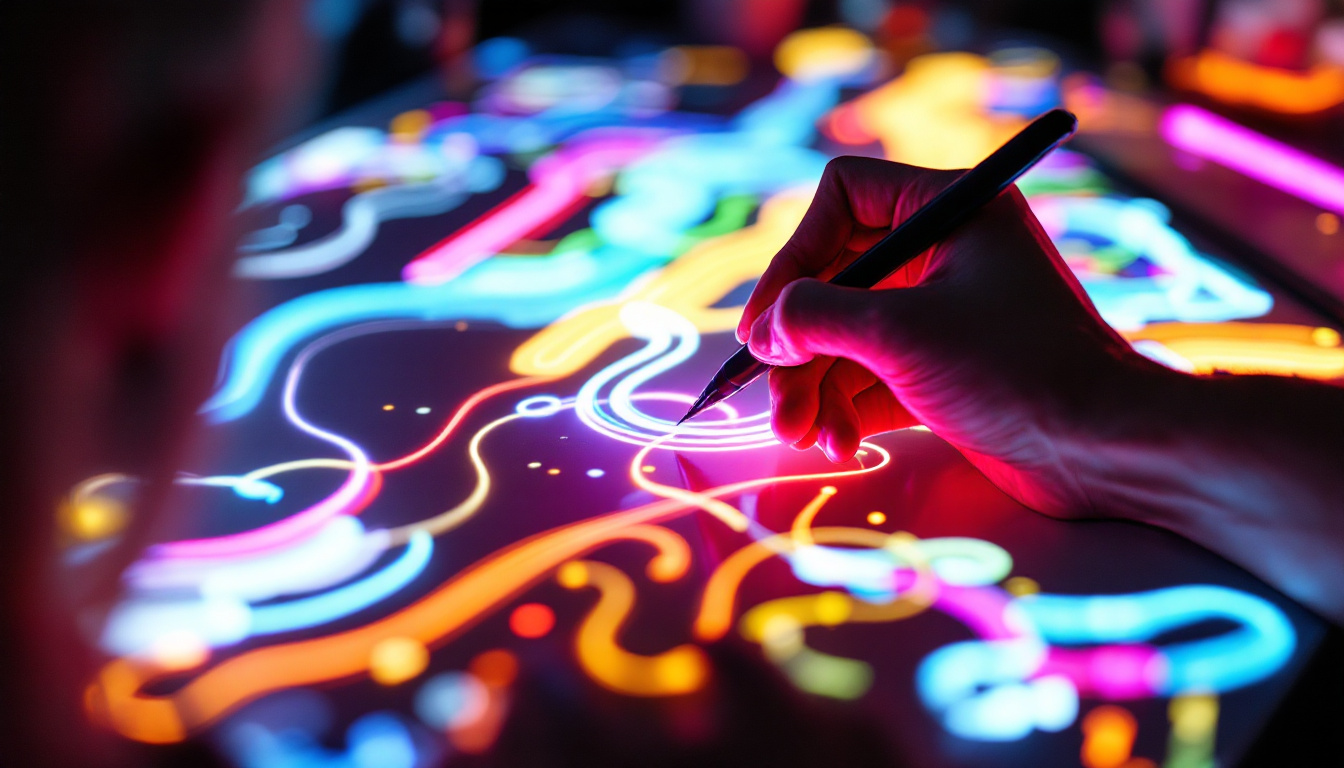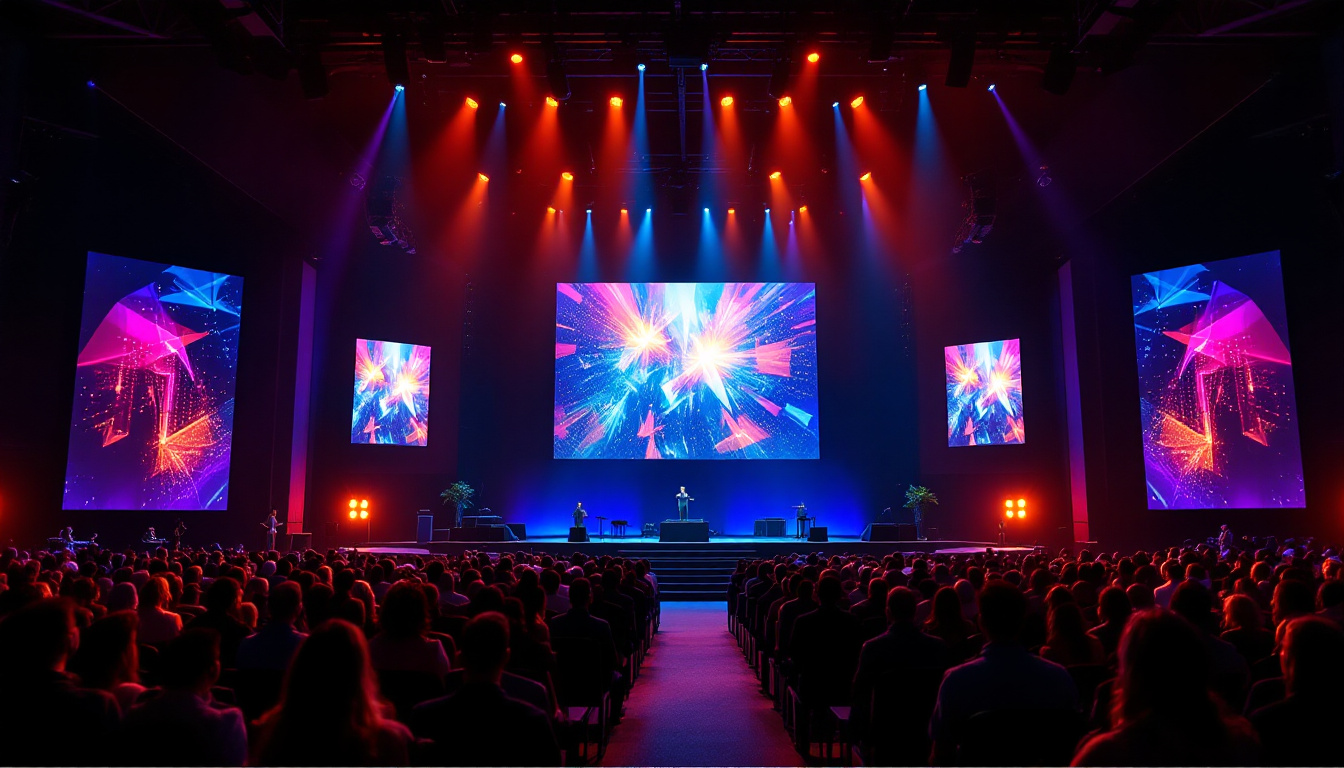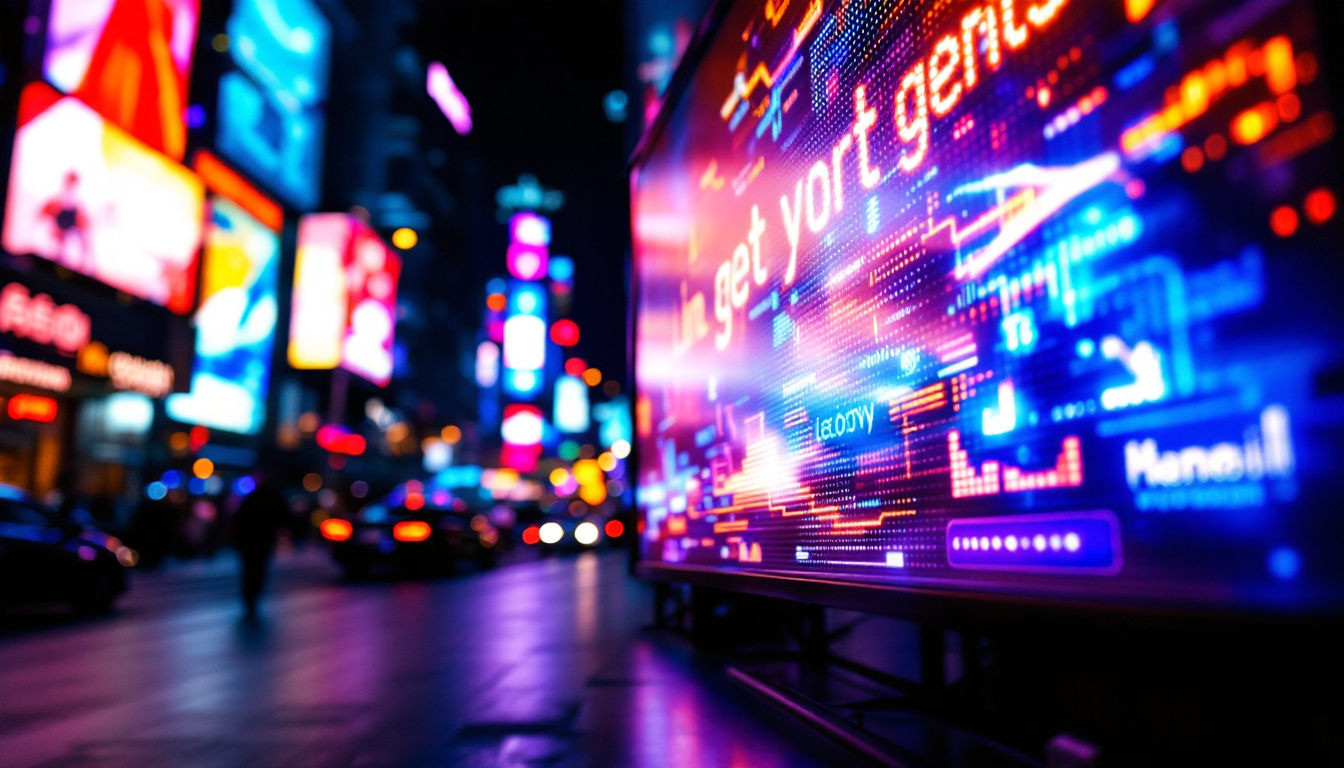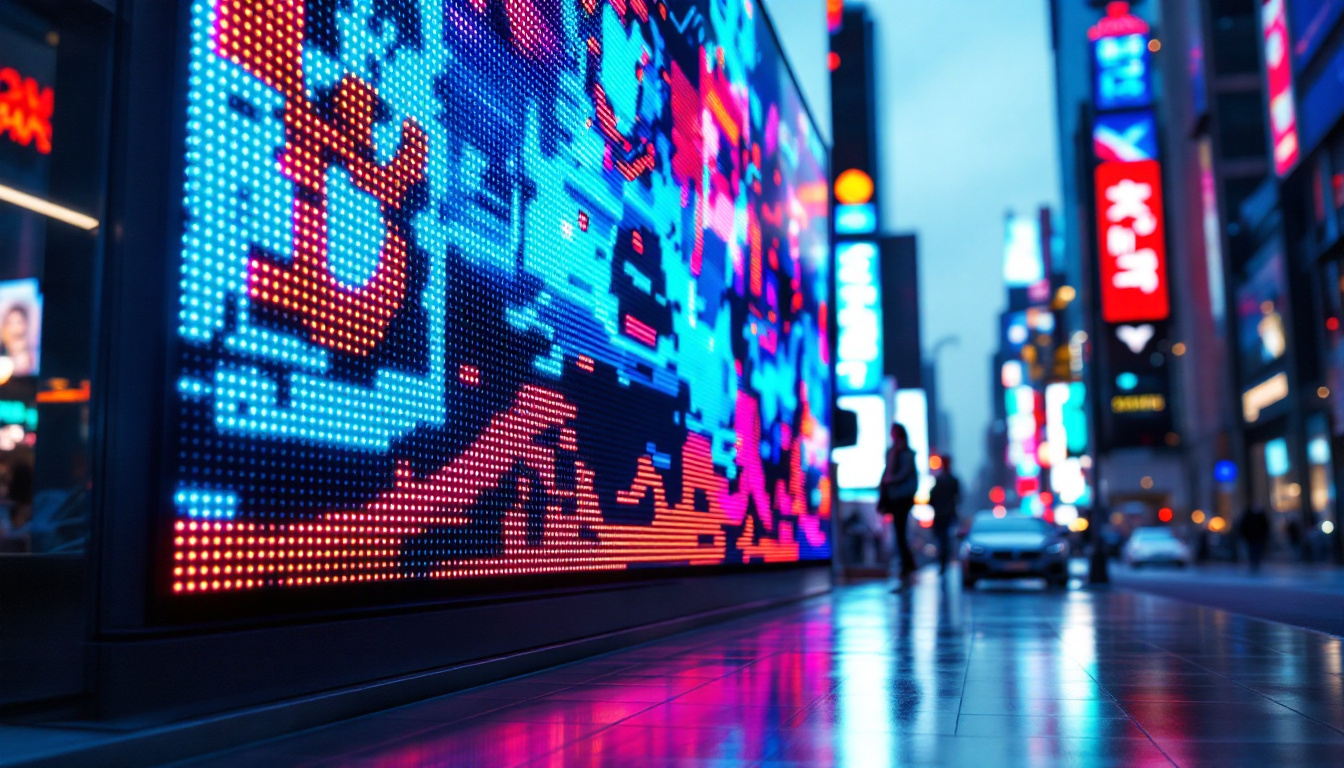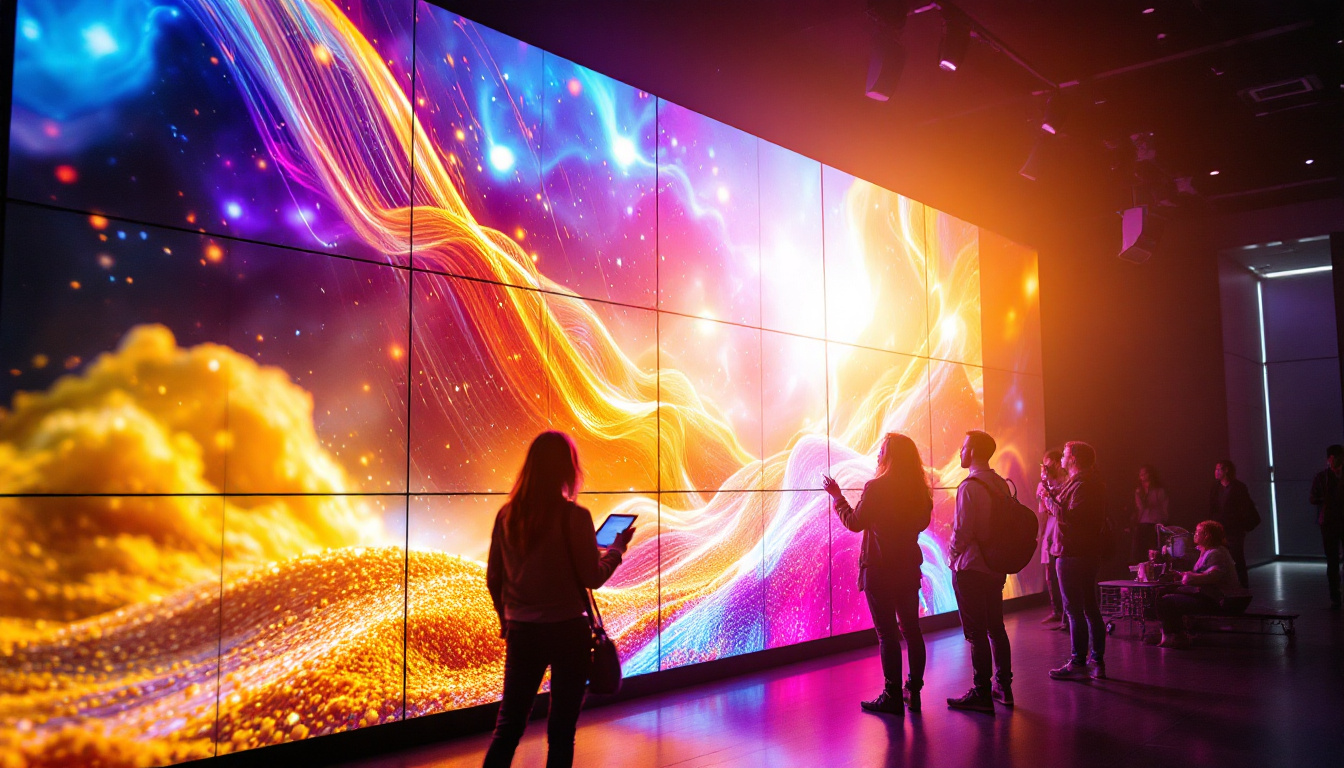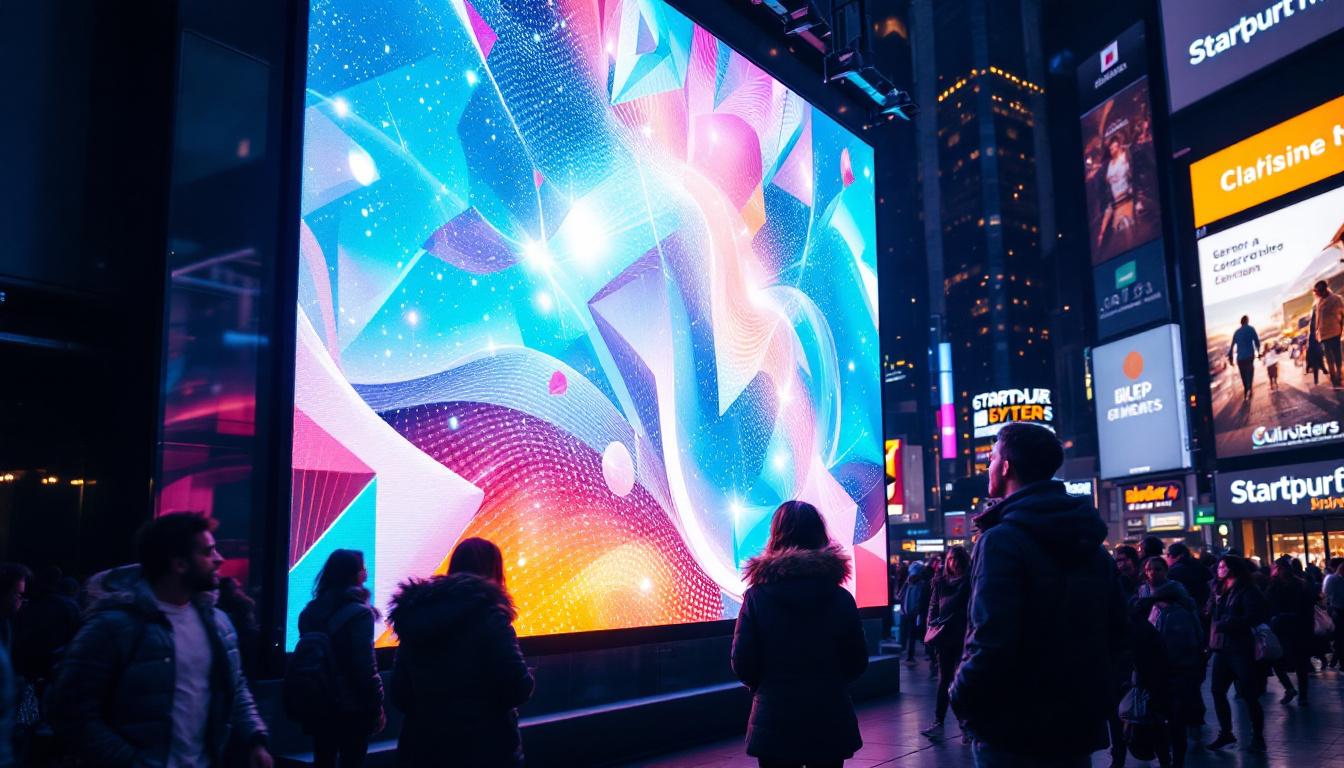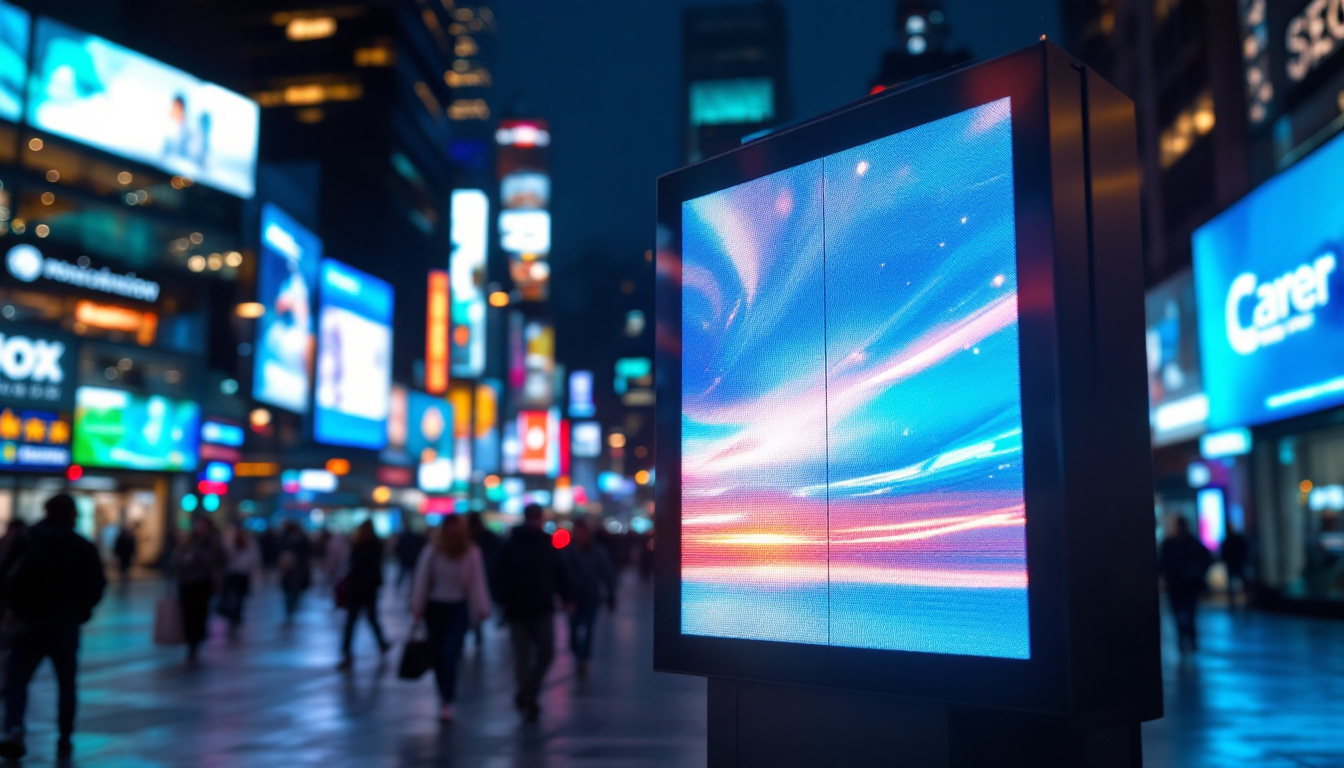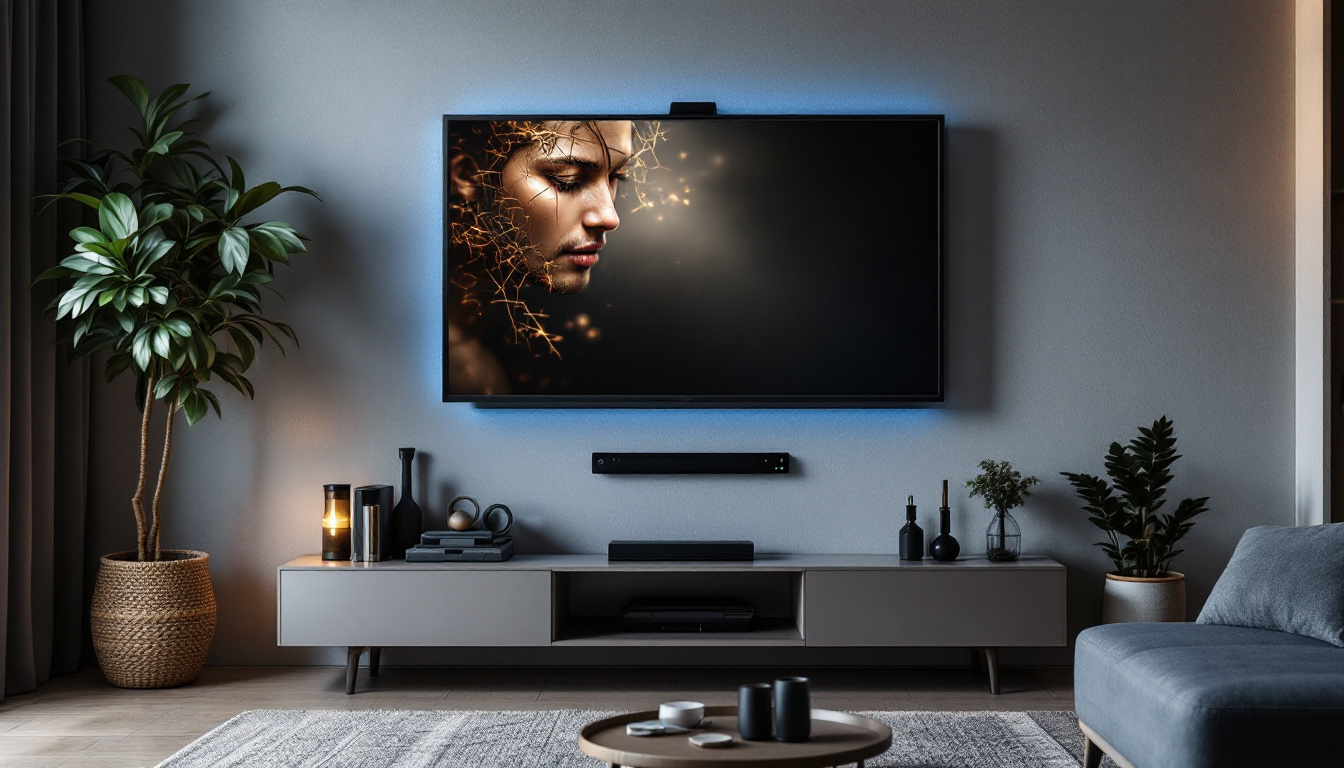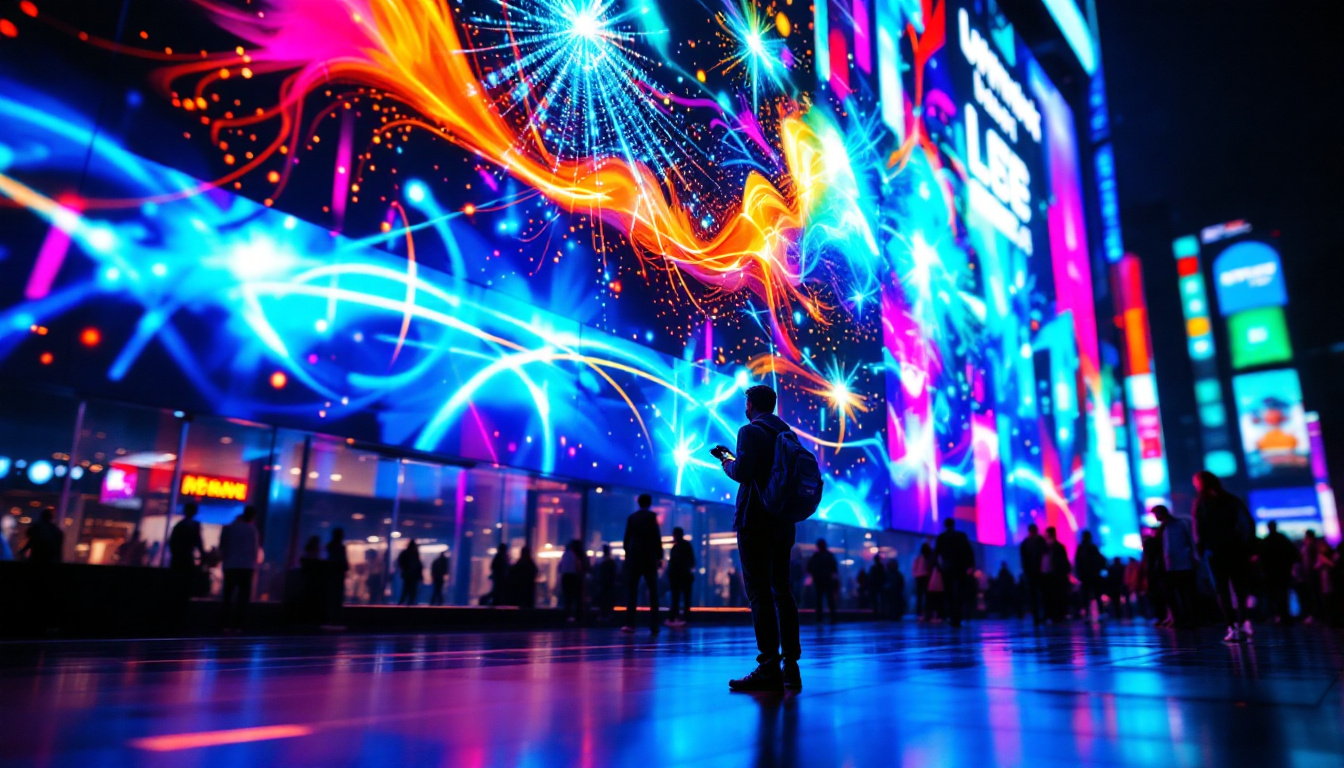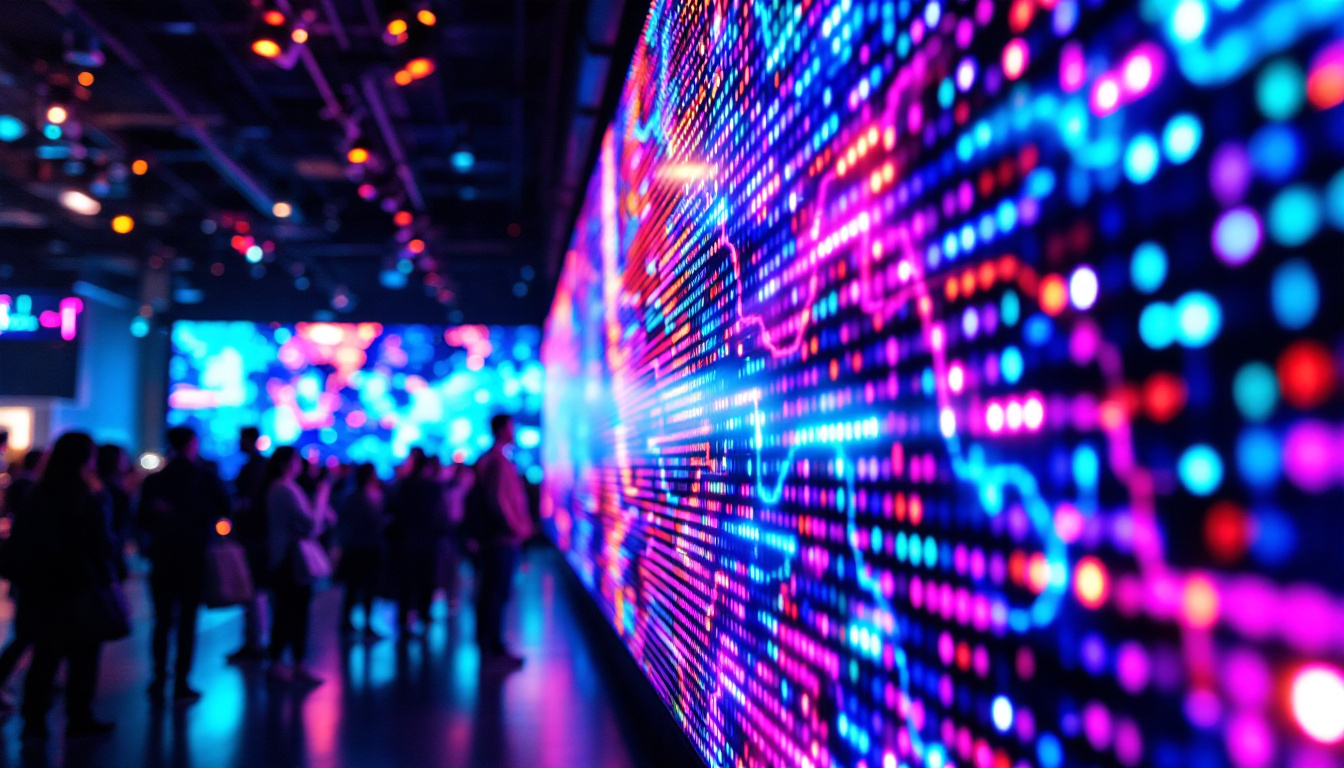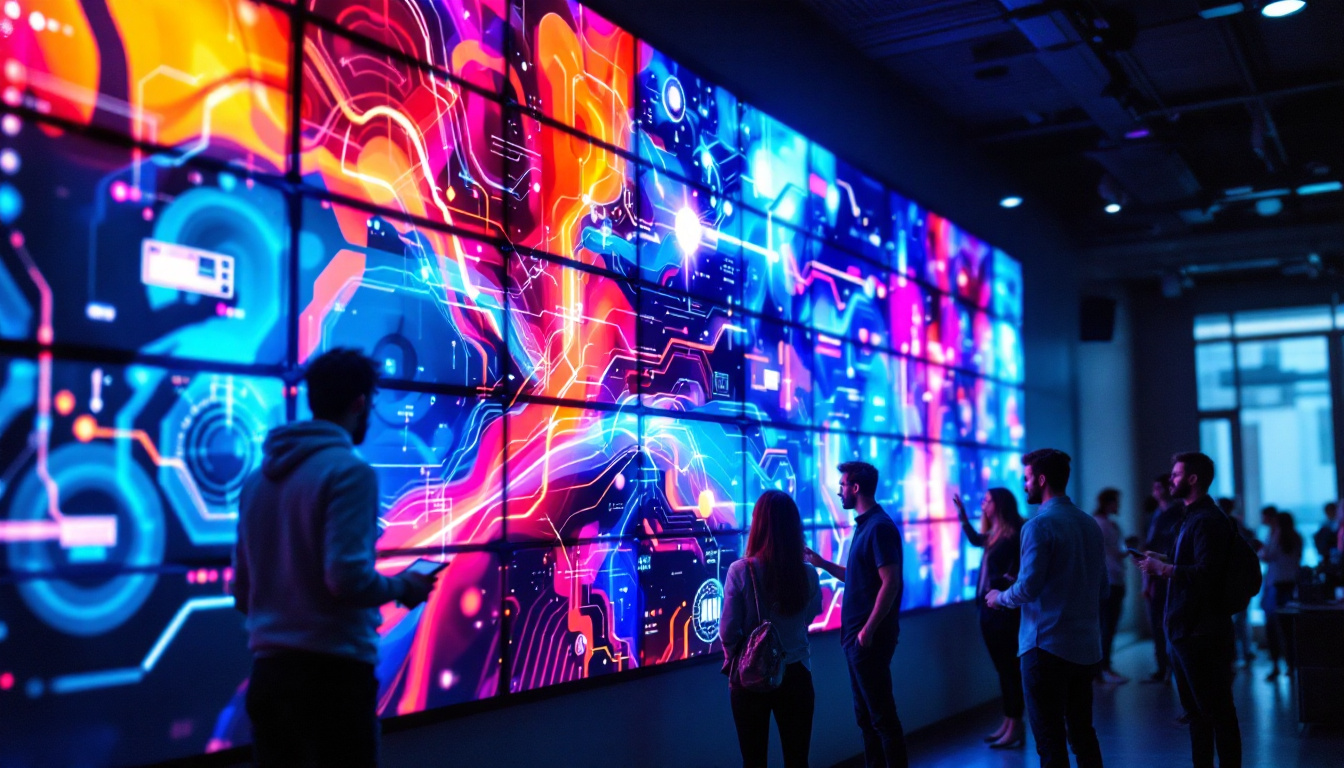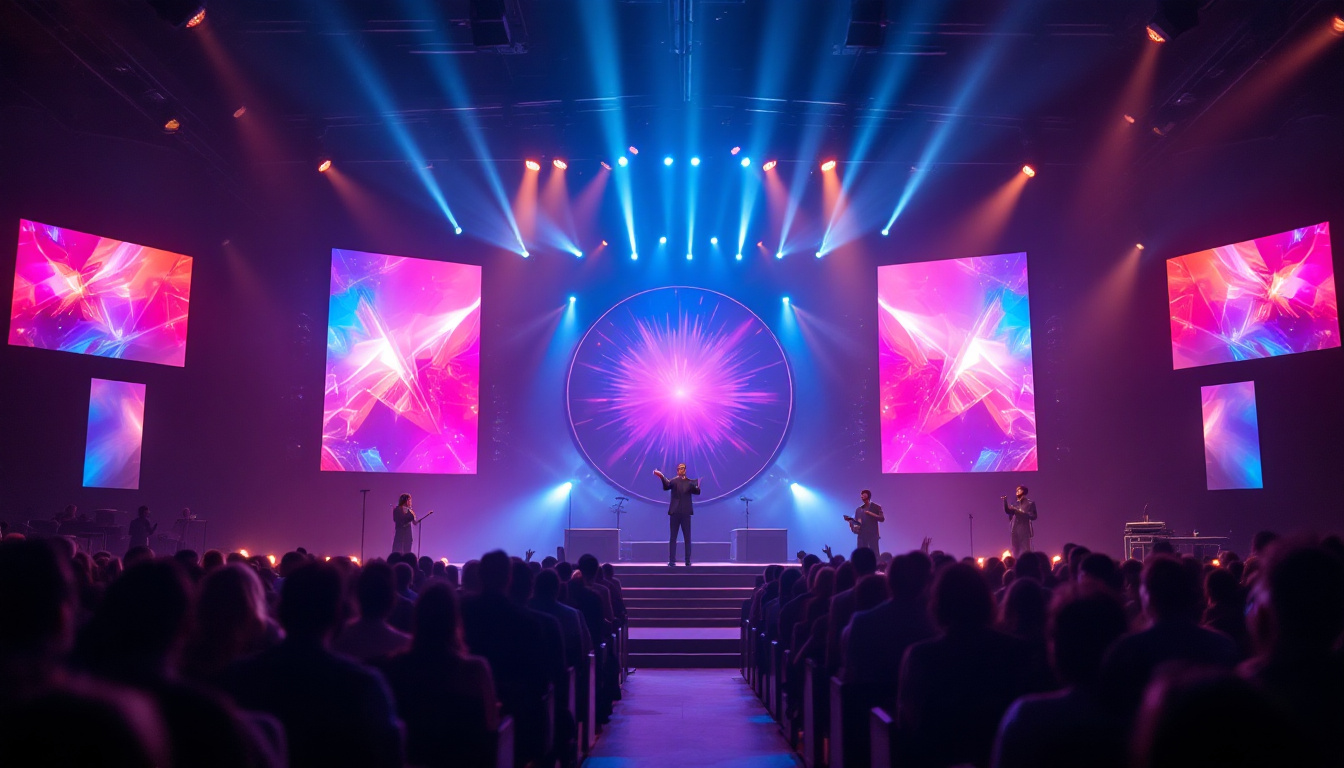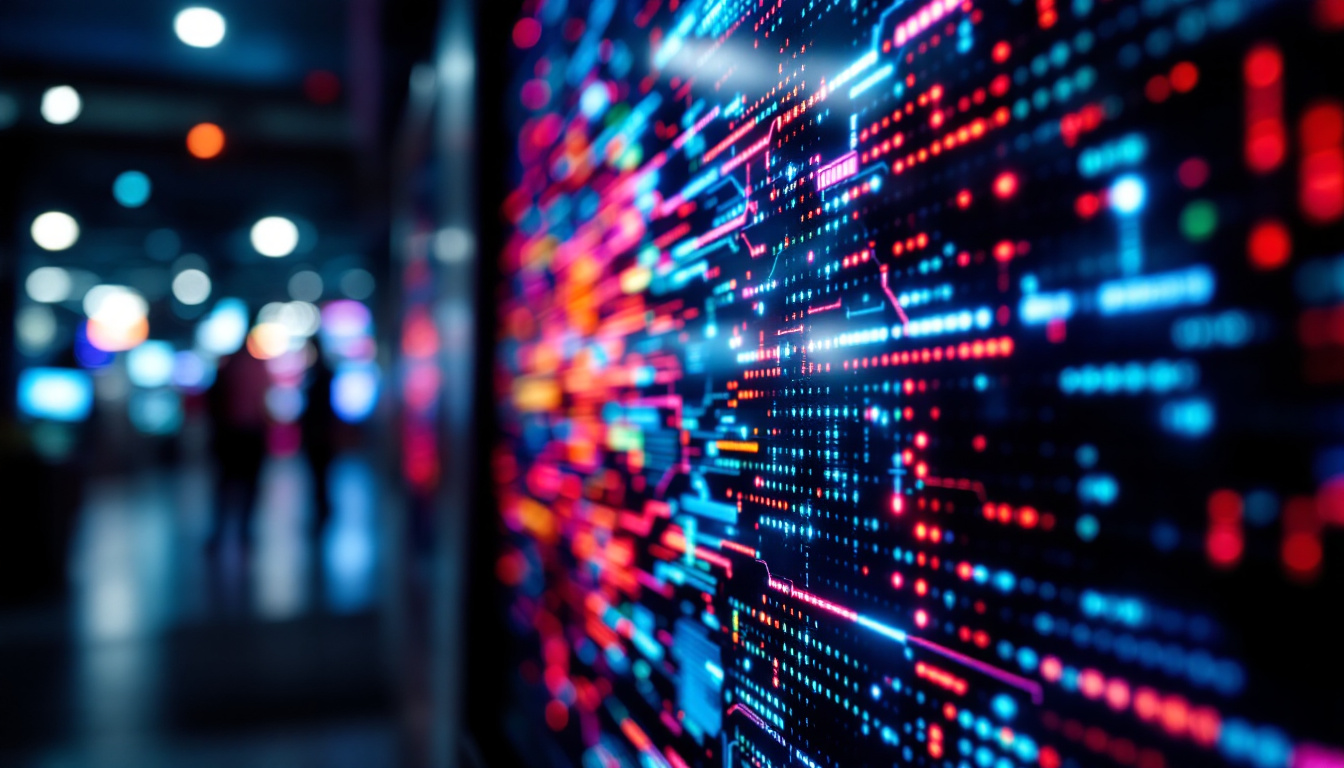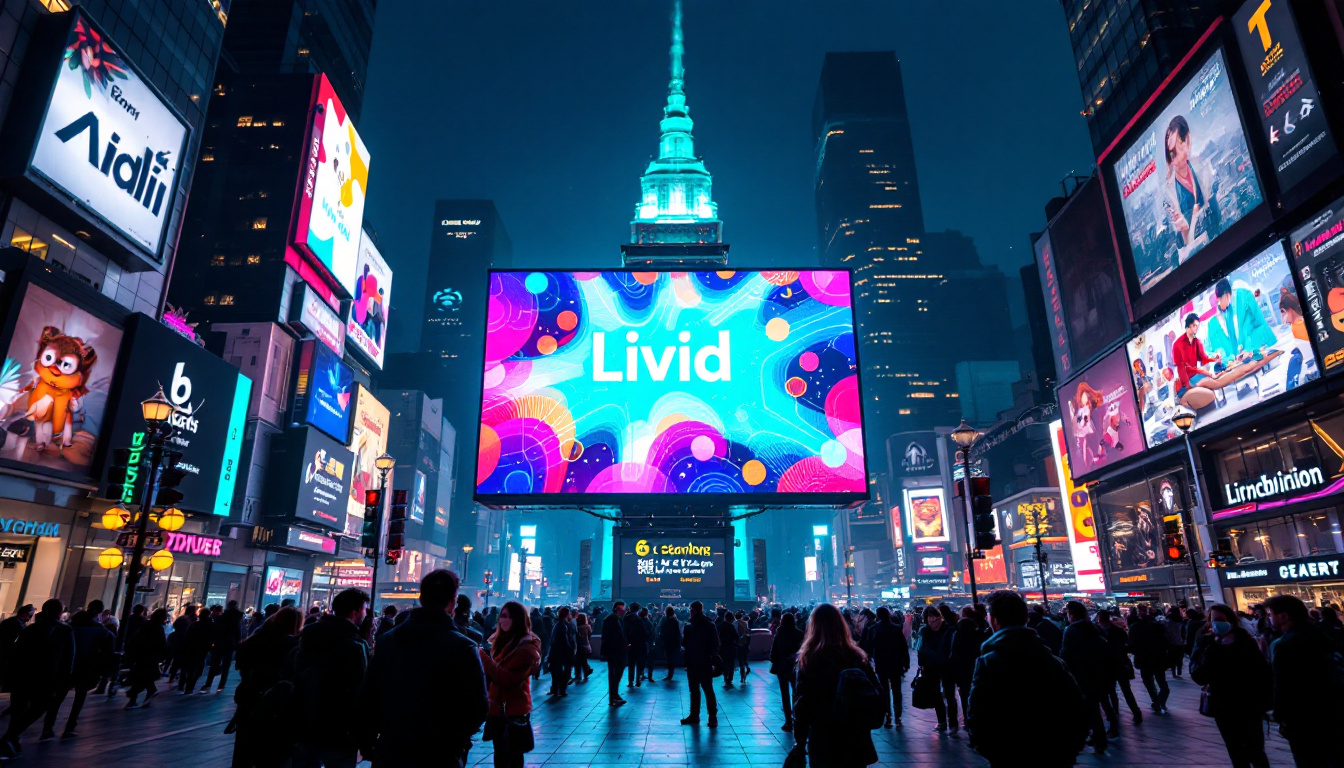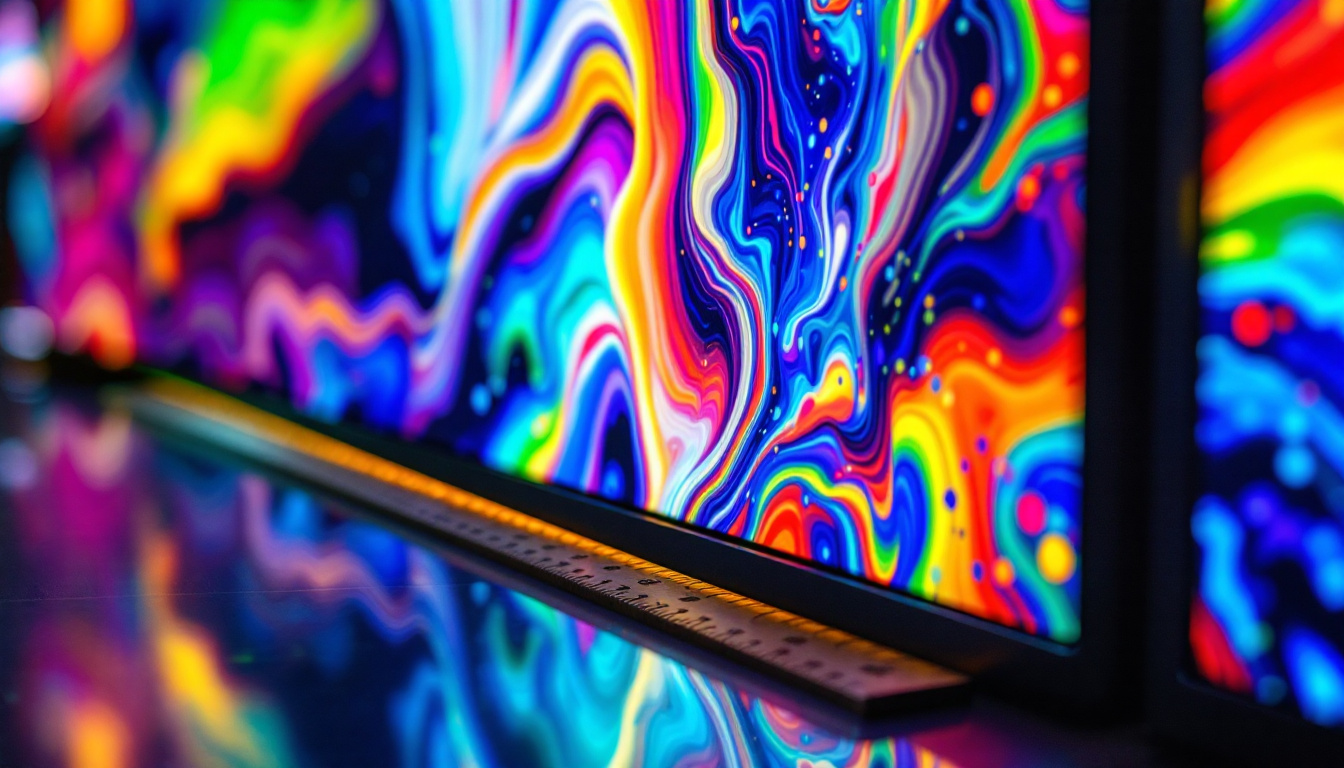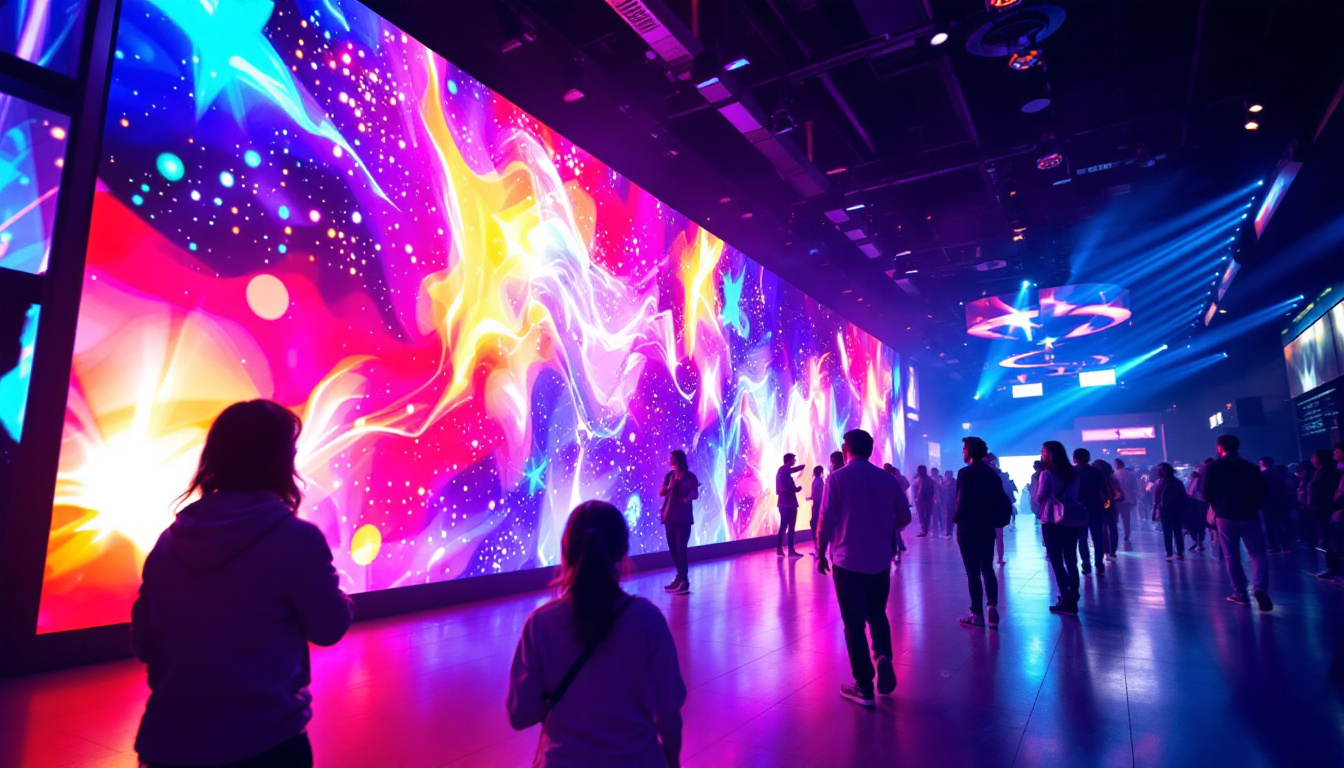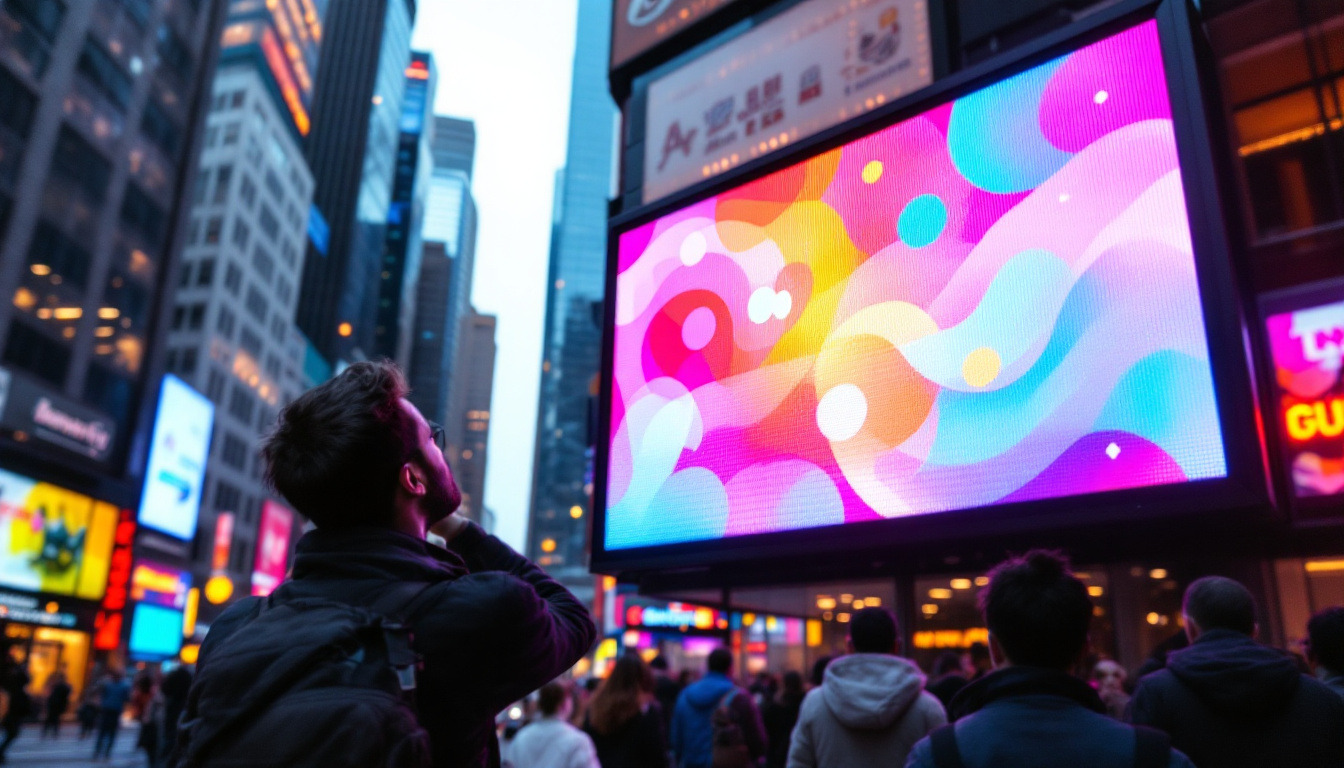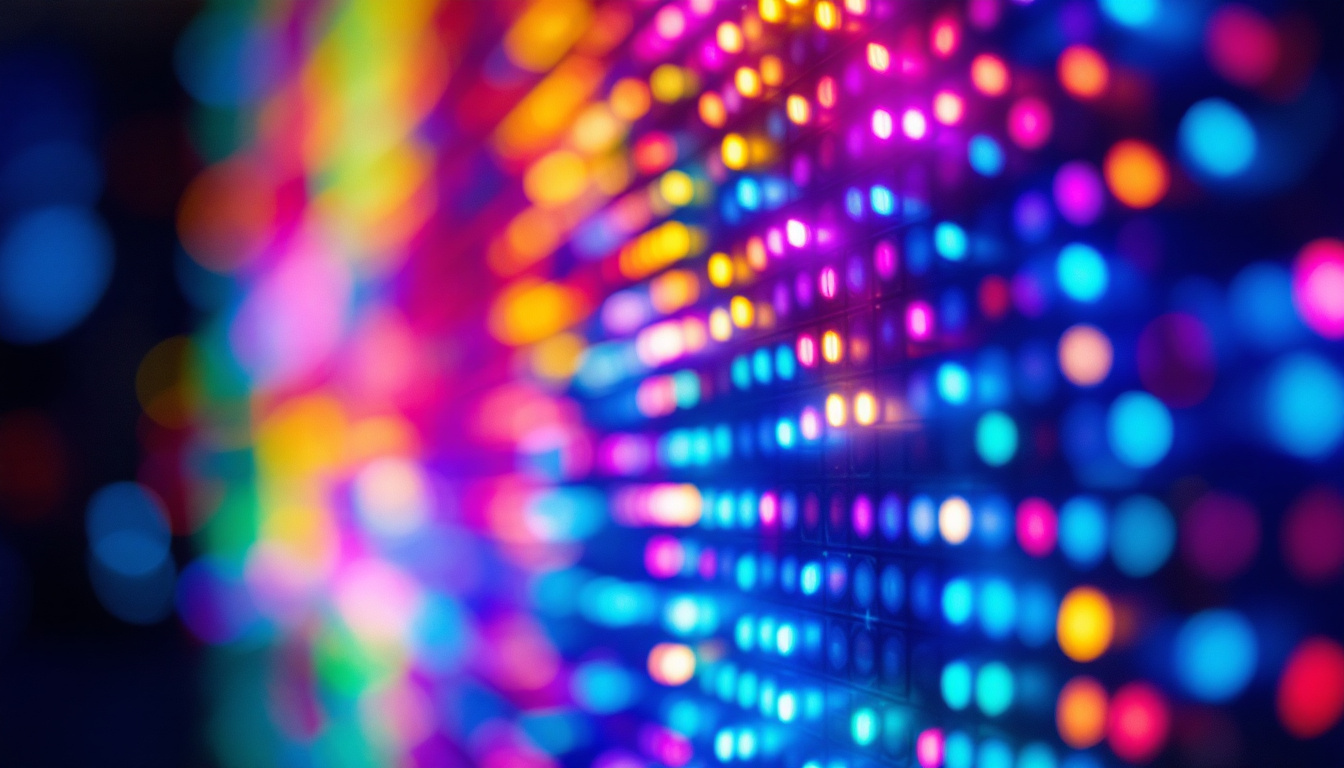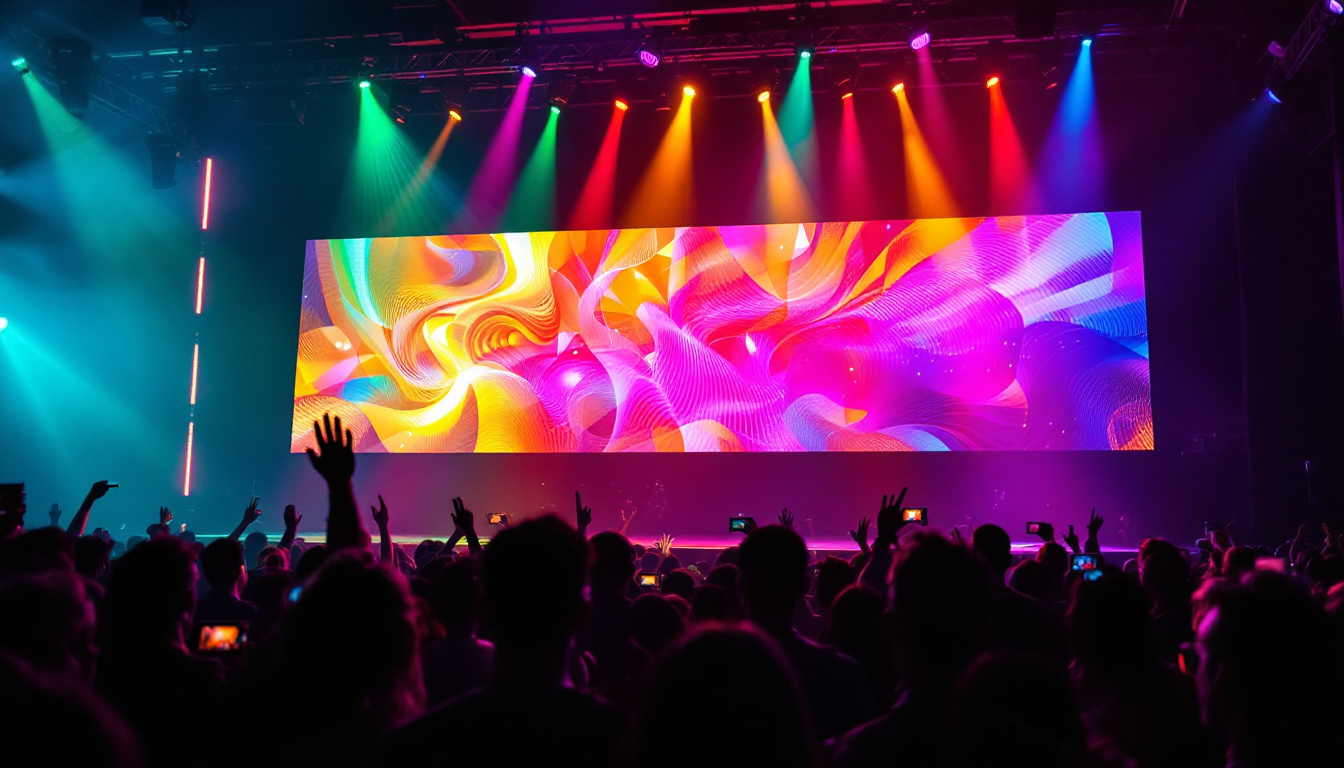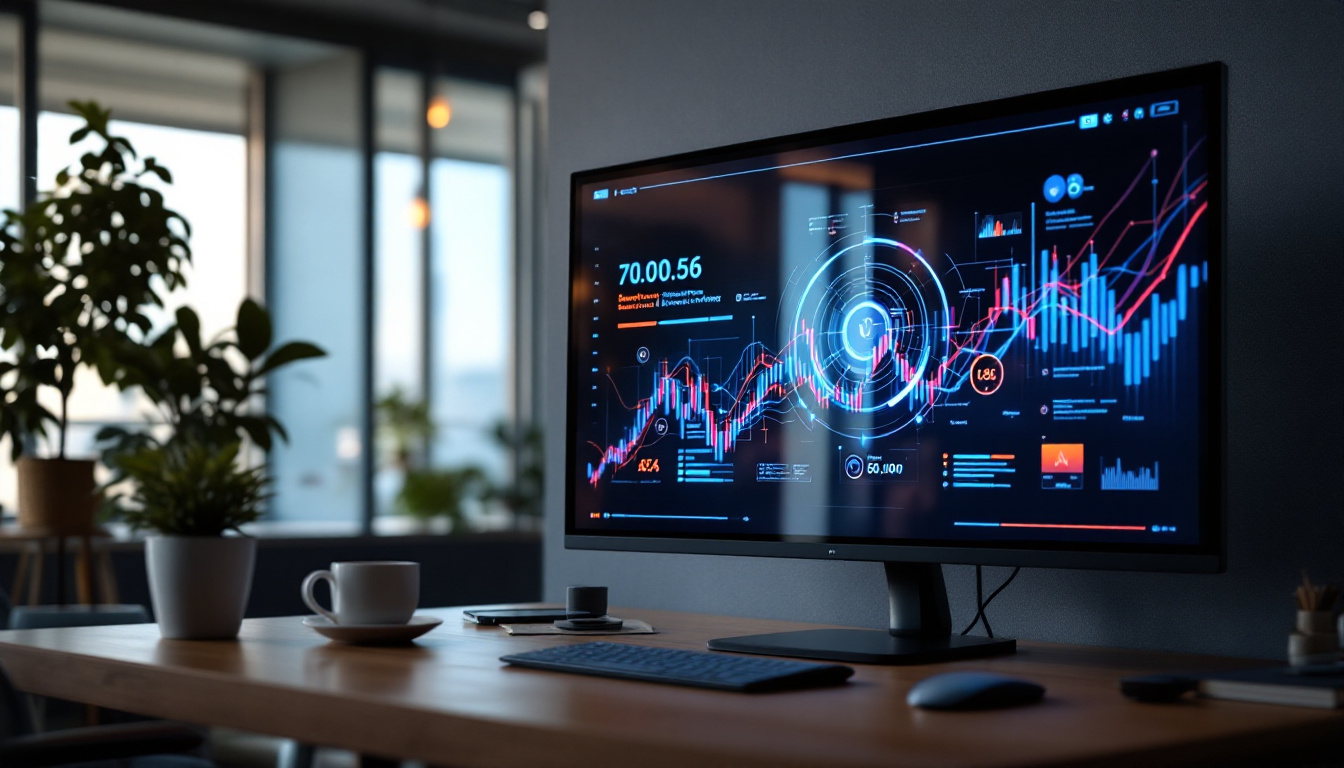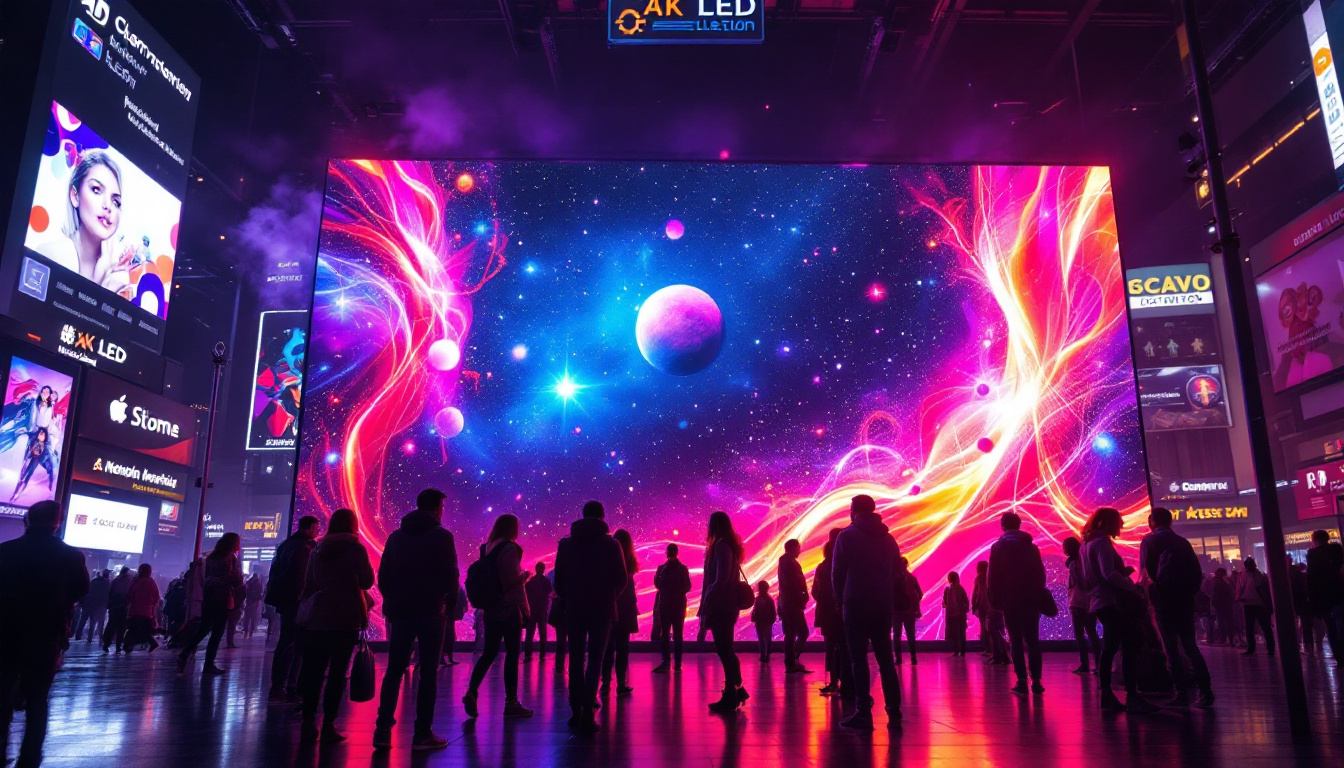In today’s fast-paced digital world, LED displays have become an integral part of our visual experience. From advertising billboards to large-scale event screens, LED technology has transformed how information is presented and consumed. This article delves into the various aspects of LED displays, exploring their functionality, benefits, and applications.
Understanding LED Technology
Light Emitting Diodes (LEDs) are semiconductor devices that emit light when an electric current passes through them. This technology has evolved significantly over the years, leading to the development of various types of LED displays that cater to different needs and environments. Originally, LEDs were primarily used for indicators and simple displays, but advancements in technology have expanded their applications to include everything from large-scale advertising billboards to intricate lighting designs in architectural spaces.
How LED Displays Work
At the core of an LED display is a matrix of tiny LED lights that can be individually controlled to create images and videos. Each pixel is made up of red, green, and blue (RGB) LEDs, which combine to produce a wide spectrum of colors. The ability to control each pixel independently allows for high-resolution images and dynamic content. Furthermore, modern LED displays often incorporate advanced technologies such as pixel mapping and color calibration, which enhance the visual experience by ensuring that colors remain consistent across different viewing angles and lighting conditions.
LED displays operate using two primary technologies: direct view and rear projection. Direct view displays are composed of individual LED modules that are assembled to form a larger screen, while rear projection displays use a projector to cast images onto a screen from behind. Each method has its advantages and is chosen based on specific use cases. For instance, direct view displays are favored for their brightness and clarity, making them ideal for outdoor advertising, while rear projection displays are often used in environments where space is limited and a more subtle presentation is desired.
Types of LED Displays
LED displays can be categorized into several types based on their application and configuration. The most common types include:
- Indoor LED Displays: These are designed for use in controlled environments such as shopping malls, conference rooms, and theaters. They typically have a higher pixel density for better image quality at close viewing distances. Indoor displays are also often equipped with features like ambient light sensors that adjust brightness levels automatically, enhancing the viewing experience.
- Outdoor LED Displays: Built to withstand harsh weather conditions, outdoor displays are larger and brighter, ensuring visibility even in direct sunlight. They are often used for advertising and public information. These displays are engineered with protective coatings and robust housing to prevent damage from rain, wind, and UV exposure, making them a reliable choice for long-term outdoor use.
- Transparent LED Displays: These innovative displays allow light to pass through, making them ideal for storefronts and exhibitions where visibility is crucial. Transparent displays can create stunning visual effects without obstructing the view of the products behind them, providing a unique way to engage customers while maintaining an open and inviting atmosphere.
Another emerging type of LED display is the flexible LED screen, which can be bent and shaped to fit various surfaces. This adaptability opens up new possibilities for creative installations in art and design, allowing for immersive experiences that were previously unattainable. As LED technology continues to advance, we can expect even more innovative applications that push the boundaries of how we interact with visual media.
Benefits of LED Displays
LED displays offer numerous advantages over traditional display technologies, making them a popular choice for a variety of applications. Understanding these benefits can help businesses and organizations make informed decisions about their visual communication strategies.
Energy Efficiency
One of the most significant benefits of LED displays is their energy efficiency. Compared to traditional incandescent or fluorescent displays, LEDs consume significantly less power. This not only reduces operating costs but also contributes to a lower carbon footprint, making them an environmentally friendly option. Additionally, many LED displays are designed with smart technology that allows them to adjust brightness based on ambient light conditions, further optimizing energy use and enhancing visibility during both day and night.
Longevity and Durability
LED displays are known for their long lifespan, often lasting up to 100,000 hours or more. This durability is due to their solid-state construction, which makes them resistant to shocks and vibrations. As a result, they require less frequent replacements, further enhancing their cost-effectiveness. Furthermore, the robust nature of LED technology means that these displays can withstand harsh weather conditions, making them suitable for outdoor installations, such as billboards and stadium screens, where traditional displays might fail or degrade quickly.
High-Quality Visuals
The ability to produce vibrant colors and high contrast ratios makes LED displays ideal for various applications. Whether it’s a captivating advertisement or a live event broadcast, the clarity and brightness of LED technology ensure that content is displayed effectively, capturing the audience’s attention. Moreover, advancements in LED technology have led to the development of finer pixel pitches, allowing for ultra-high-definition displays that can deliver stunning visuals even at close viewing distances. This capability is particularly beneficial in settings like retail environments, where engaging visuals can significantly enhance customer experiences and drive sales.
Versatility in Design
Another remarkable advantage of LED displays is their versatility in design and application. They can be configured in various shapes and sizes, from large-scale outdoor screens to smaller indoor panels, making them suitable for a wide range of environments. This flexibility allows businesses to create customized solutions that fit their specific needs, whether for advertising, information dissemination, or entertainment. Additionally, with the advent of modular LED technology, screens can be easily expanded or reconfigured to adapt to changing requirements, ensuring that organizations can keep pace with evolving visual communication trends.
Interactive Capabilities
LED displays are increasingly being integrated with interactive technologies, allowing for dynamic user engagement. Touchscreen capabilities and integration with mobile devices enable audiences to interact with the content displayed, creating immersive experiences that can enhance marketing campaigns or educational presentations. This interactivity not only captivates viewers but also provides valuable data on audience engagement, helping organizations refine their strategies and improve their messaging. As technology continues to advance, the potential for LED displays to incorporate augmented reality and other interactive features is expanding, paving the way for even more innovative applications in the future.
Applications of LED Displays
The versatility of LED displays allows them to be utilized in a wide range of settings. From commercial to entertainment, the applications are vast and varied.
Advertising and Marketing
One of the most prominent uses of LED displays is in advertising. Billboards and digital signage in high-traffic areas leverage the brightness and dynamic capabilities of LED technology to attract potential customers. Advertisers can easily update content in real-time, allowing for timely promotions and targeted messaging.
Events and Entertainment
In the entertainment industry, LED displays are crucial for concerts, festivals, and sporting events. Large screens provide audiences with a clear view of performances and activities, enhancing the overall experience. Additionally, LED displays can be configured in various shapes and sizes, allowing for creative stage designs and immersive environments.
Corporate Communication
Businesses utilize LED displays for internal and external communication. In corporate settings, these displays can be used for presentations, announcements, and wayfinding. They are also effective in trade shows and exhibitions, where companies can showcase their products and services in an engaging manner.
Choosing the Right LED Display
With various options available, selecting the right LED display can be a daunting task. Several factors should be considered to ensure the chosen display meets specific needs and requirements.
Resolution and Pixel Pitch
Resolution is a critical factor in determining the clarity of an LED display. Pixel pitch, which refers to the distance between the centers of two adjacent pixels, directly affects resolution. A smaller pixel pitch results in higher resolution, making it suitable for close viewing distances. Conversely, a larger pixel pitch is appropriate for outdoor applications where viewers are typically farther away.
Brightness and Visibility
Brightness is another essential consideration, especially for outdoor displays. Measured in nits, the brightness level should be sufficient to ensure visibility in various lighting conditions. For outdoor displays, a brightness level of at least 5,000 nits is often recommended to combat sunlight glare.
Installation and Maintenance
Installation requirements can vary significantly based on the type of LED display. Indoor displays may require less structural support than outdoor ones, which need to be weatherproofed and securely mounted. Additionally, maintenance should be considered; some displays offer modular designs that simplify repairs and replacements, reducing downtime.
The Future of LED Display Technology
The LED display industry is continuously evolving, driven by advancements in technology and changing consumer demands. As new innovations emerge, the capabilities of LED displays are expanding, paving the way for exciting possibilities.
Advancements in Flexibility
One of the most notable trends in LED technology is the development of flexible displays. These displays can be bent and shaped to fit unconventional surfaces, allowing for creative installations in architecture and design. This flexibility opens up new avenues for artistic expression and branding opportunities.
Integration with Smart Technology
As the Internet of Things (IoT) continues to grow, LED displays are increasingly being integrated with smart technology. This integration allows for real-time data display, interactive content, and enhanced user engagement. For instance, displays can be programmed to change based on audience behavior or environmental conditions, making them more dynamic and responsive.
Improved Sustainability
With a growing focus on sustainability, manufacturers are exploring ways to make LED displays more eco-friendly. This includes using recyclable materials, reducing energy consumption, and designing displays for easier disposal. As sustainability becomes a priority, the LED display industry is likely to see significant changes in production and design practices.
Conclusion
LED display solutions have revolutionized the way information is communicated visually. Their energy efficiency, durability, and high-quality visuals make them an attractive option for various applications, from advertising to corporate communication. As technology continues to advance, the possibilities for LED displays are expanding, promising even more innovative solutions in the future.
Understanding the different types of LED displays, their benefits, and their applications can help businesses and organizations make informed decisions. Whether enhancing brand visibility or creating immersive experiences, LED displays are poised to remain a vital component of modern communication strategies.
In a world where visual engagement is paramount, investing in LED display technology is not just a trend but a strategic move towards effective communication and brand enhancement.
Explore Cutting-Edge LED Displays with LumenMatrix
Ready to elevate your visual communication strategy with the latest in LED technology? LumenMatrix is at the forefront of innovation, offering a diverse range of LED display solutions tailored to your unique needs. From captivating Indoor LED Wall Displays to dynamic Outdoor LED Wall Displays, and from versatile Vehicle LED Displays to engaging LED Sports Displays, our products are designed to make your brand stand out. Discover the transformative power of our LED Poster Displays, Floor LED Displays, Custom LED Displays, All-in-One LED Displays, and LED Transparent Displays. Embrace the future of visual engagement with LumenMatrix and create unforgettable experiences for your audience. Check out LumenMatrix LED Display Solutions today and start sharing your message with unparalleled impact and clarity.

